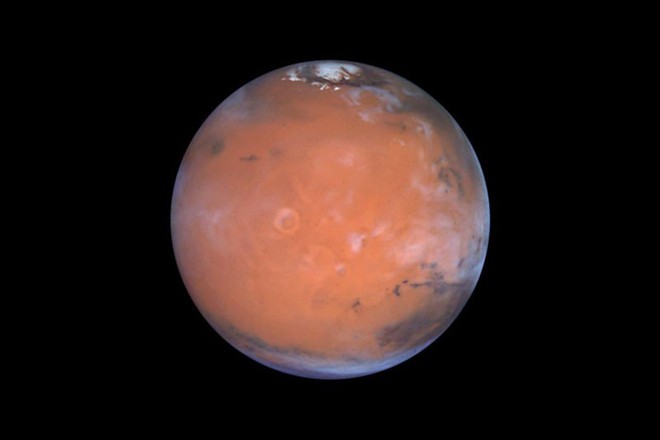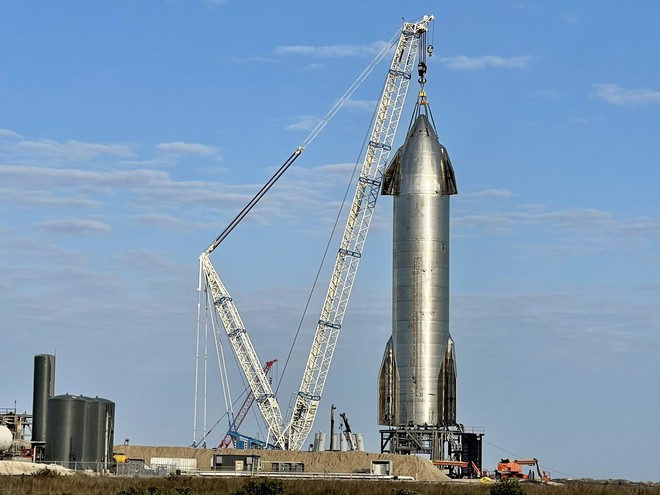Elon Musk’s plan to colonize highly imperfect Mars is still fraught with pitfalls and is being corrected.
Late last year, Elon Musk confidently claimed that when 2026 comes he will send humans to Mars. But cruise missiles don’t run on confident fuel, beliefs or any other beliefs, now rockets still have to run on combustion fuel and a series of complicated calculations. We have yet to realize the dream with the technology in hand.
These are factors that will hamper the US billionaire’s plan to colonize Mars:
In 2018, scientists announced the discovery of a large source of liquid water located about 1.5 km below the ice cap at the south pole of Mars. In September 2020, they reaffirmed their conclusions: the probe discovered a cluster of liquid lakes under the ice.
Scientists have long suspected that below the surface, Mars contains a lot of water.
The lakes cover an area of 75,000 km2 (22 times the size of Hanoi) and are rich in salt – the element that keeps water in liquid form when the temperature drops to -73 degrees Celsius. The reason for this discovery attracts attention It’s simple: water is the source of life, or at least that’s how life works on Earth.
However, it is not yet certain that future Martians will be able to take advantage of the cold water. Not sure whether the water contains living organisms or not, moreover, we can also face the risk of polluting this large lake with impurities and bacteria from the Earth. Scientists can misidentify the signs identifying life, terrestrial bacteria will pollute water sources that exist separately from the outside world for many years.
Before using the lake water, scientists will have to spend decades drilling samples, analyzing and searching for rare alien species.
Elon Musk once sketched out a “crazy” plan: to bombard a nuclear bomb on the icy poles of Mars to release accumulated CO2, in order to thicken the Martian atmosphere and increase the average temperature at the surface of the Earth. planet to the point of living.
This plan comes up against two major obstacles:
Alexander Bloshenko, chairman of the Science and Long Range Plans division of Russian aerospace agency Roscosmos, said in an interview: Musk will have to fire up to March 10,000 rockets carrying nuclear warheads.
And if Musk insists on “no problem” in a Twitter post in response to Bloshenko, there remains a second problem …
Need 10,000 rockets? “No problem”.
Shortly after the proposed “bombardment of Mars” plan, researchers released a scientific report showing that the CO2 remaining on Mars was not enough to create a greenhouse effect strong enough to heat the onion. “We cannot make Mars habitable with current technology,” they sadly concluded.
Musk didn’t give up, he came up with a new solution: Large storefronts could support life. After seeing the failure of Mars’ Earthization plan, he said, “We can still establish bases on Mars. At least future civilizations capable of traveling in space, when they discover the remains of humanity, will still be in awe that humans have been able to come this far. “
The fictional city of Mars will also have to provide itself with the most basic necessities, but will still have to live off subsidies from Earth. To solve this problem, Elon Musk said the Martian community will need a million members, with 1 million tons of goods coming from Earth.
The first Martian settlers would have to face such conditions.
With the Starship train carrying a payload of 150 tonnes of freight and a maximum passenger capacity of 100, Musk will need to run thousands of round-trip trains to reach that dream number. Knowing that as life on Mars becomes more stable and begins to produce essentials for itself, the large numbers will decrease, but it is clear that Starship is not yet the best transportation solution.
Science and technology are still not the biggest obstacles to the Mars colonization plan. There is another big question: what kind of economy should this Martian community be? Mars cannot forever be a parasite draining the Earth’s finite resources.
In the article on “Economic errors in Elon Musk’s plan to colonize Mars”, John Hickman, professor of politics at Berry University (Georgia, USA) says that Mars has nothing. Real goods are worth exporting.
This is a big deal. History shows us that only colonies that possessed the capacity to produce a profitable commodity could survive. They are the cornerstone of the construction of the economic bridge connecting the colony to the homeland and at the same time at the service of the people ready to take back possession of the promised land.
Goods originating in Mars which cannot compete with products of terrestrial origin, the colony will not be able to carry out economic exchanges, without any potential promise of attracting labor. The maternal and influential individuals who are the engine of a successful colonial apparatus will have no interest in transferring the mouth to Mars. A signal delay of up to 3 hours 22 minutes will make the exchanges between Mars and Earth somewhat slow.
The Martian economy faces a series of major obstacles: information cannot be instantaneous, loading capacity limited, small population, low value currency. These would be giant boulders that Sisyphus – a fantastic city on Mars – would have to push through the arid sand dunes of the Red Planet.
Many people have criticized Elon Musk for his empty illusions. But also a lot of these words come from people who forget one thing: Elon Musk is not a scientist. He is known for his ability to solve problems, find the right direction, and being a successful businessman proves it. All the above mentioned difficulties will also have to face the human brain, the “computer” has found a way to communicate quantum by satellite, to build a cruise missile or maybe even to make a warp motor. And we don’t know what resources the planet without modern human footprints will hide?
Until all of the difficult questions are answered, the vast Universe in general and Mars in particular are still waiting patiently for humanity to explore.




